Sights of Moscow: photos with names and descriptions
We have put together a list for you of the most important sights of Moscow with photos, names and descriptions.
For your convenience and information search, in the right column of the site you will find a search box and our main menu. In the meantime, we suggest you look at the most visited and interesting of them.
Moscow is majestic and multifaceted, and therefore, with each visit, it opens up new and still unknown sights with a rich history for tourists.
Here temples and churches coexist with empire-style Stalinist houses, old estates are located side by side with modern, sparkling windows, restaurants and fashionable shops, and skyscrapers of the 1950s seem to echo the current skyscrapers of Moscow City.
Today in Moscow there are about four hundred museums and art clusters, about 150 theater and concert venues.
TOP-25: a brief description of famous sights
It is advisable to stay in the capital for a long time in order to feel its spirit as much as possible, to absorb the energy of a truly dynamic metropolis with more than 800 years of history.
In each description you will find a photo of the attraction and its name. If you need more detailed information, go to the "Search" menu on the right side of the screen and type in the name of the object you are interested in.
Kremlin and Red Square
Perhaps these are the most familiar and popular places among Moscow sights, and the Kremlin towers with five-pointed ruby stars and chimes on Spasskaya have become a brand of the capital. The Kremlin, as a defensive structure, began to take shape as early as the 12th century, and over its long history it has been rebuilt and completed more than once. Well, all the important celebrations on the occasion of significant Russian holidays are held on Red Square. In addition, fairs and cultural events are held here.
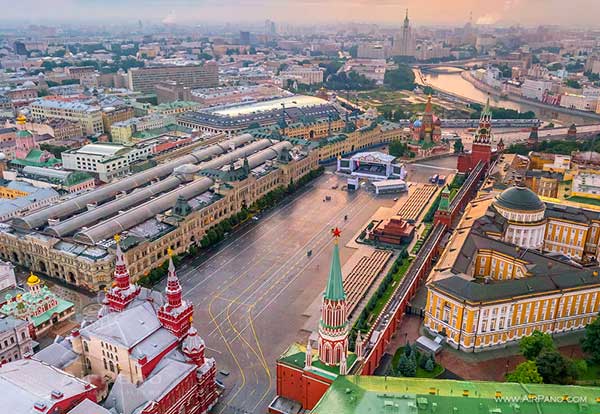
The temple began to be erected by decree of Ivan the Terrible himself to the Glory of the Lord on the occasion of the capture of Kazan. At the initial stage of construction, the domes of the religious building were gilded, and the facade was decorated in red and white. After a fire that happened in the 13th century, the restored cathedral received its multi-colored domes, which are still admired by tourists.
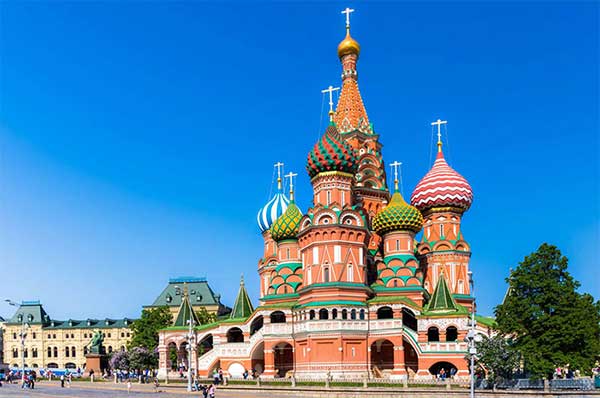
The gun is striking in its size, given that it was cast in 1568: with a barrel length of about 5 meters and a caliber of 90 centimeters, it weighs about 40 tons. It is assumed that for the entire time of its existence, the Tsar Cannon never fired a single live shot.
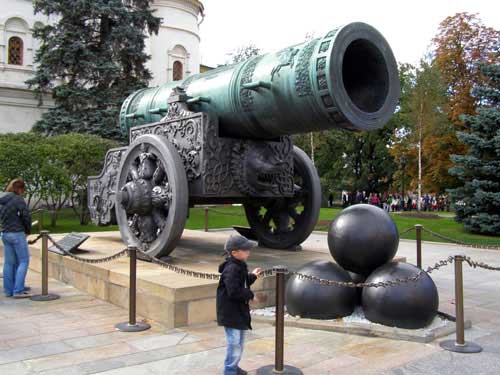
GUM
Another attraction of Moscow is the GUM building. This place on Red Square dates back to the 19th century, when shopping arcades appeared here. GUM became the country's main store back in Soviet times, but even today it has not lost its significance: boutiques of the most famous and expensive world brand companies are located here.
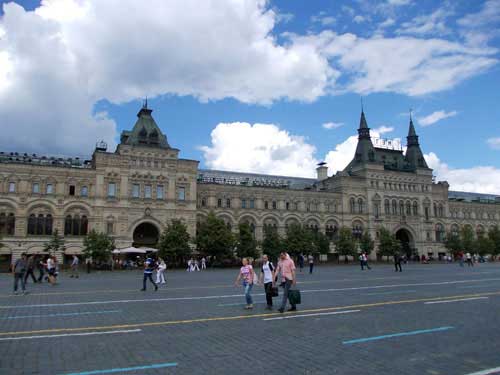
Old Arbat
It is probably difficult to find a person in the country who has not heard about this pedestrian street in Moscow - Old Arbat. Here today, among the beautiful architectural sights, you can listen to street musicians or order your portrait to the artist. All kinds of restaurants, various museums and souvenir shops are open for tourists and Muscovites.
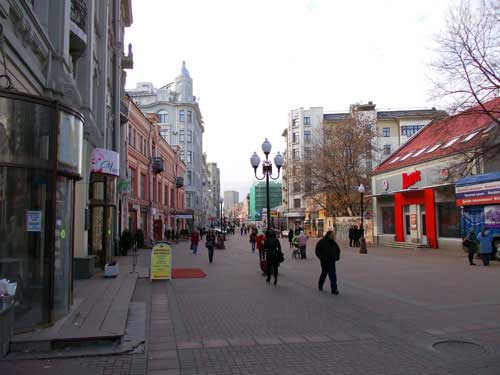
The Cathedral Orthodox Church of the capital, where the Patriarch of All Rus' conducts services, was erected to commemorate the victory over Napoleon in the Patriotic War of 1812. The project was carried out by the famous architect Konstantin Ton, and the construction lasted more than four decades. During the years of Soviet power, the HHS was destroyed, intending to build the Palace of Soviets in its place. It was possible to raise only the foundation, after which the idea was abandoned and the all-season Moskva pool was opened here. The temple was rebuilt again between 1994 and 1997.
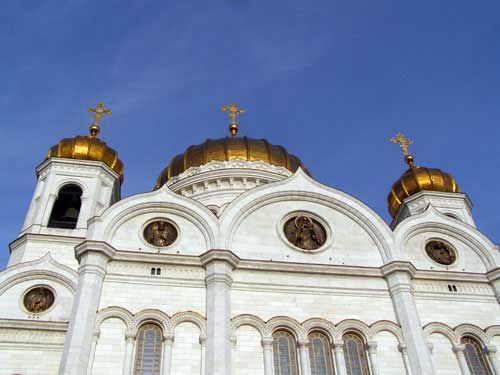
This is, without a doubt, the main "temple" of the opera and ballet of the Russian Empire, then the USSR, and now modern Russia. The first building was erected in 1825. After a fire in 1853, the building was rebuilt by 1856. By the end of the 19th century, a large-scale reconstruction of the Bolshoi Theater was carried out, which was repeated only in the first decade of the 21st century.
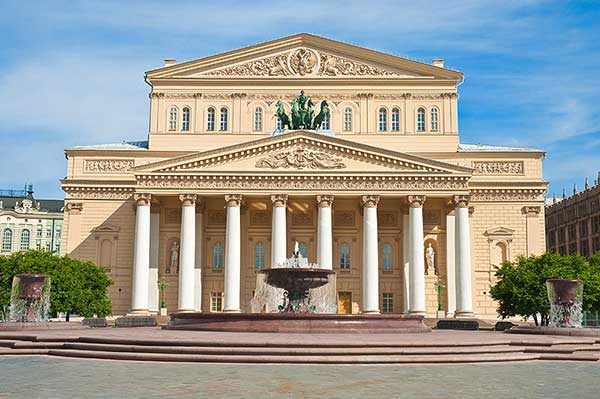
Tsar Bell in the Kremlin
The Tsar Bell is somewhat akin to the Tsar Cannon, because for all the time of its existence, it has not pleased the parishioners with a bell ringing. Either a casting error, or a fire led to the fact that a huge piece broke off from its lower part, which today can be seen next to the largest ringing in size - the Tsar Bell.
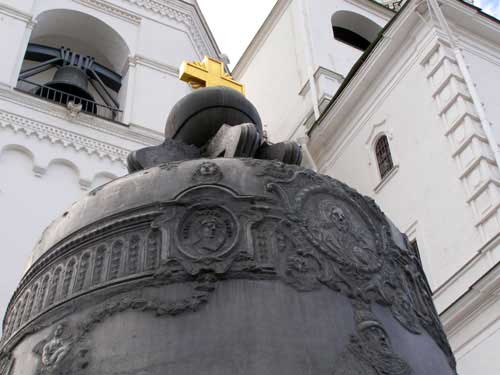
The oldest convent of the Mother See of the capital and one of the main attractions of Moscow. According to legend, it was erected on the spot where, during the years of the Tatar-Mongol yoke, Russian beauties were chosen to be sent as concubines to the Golden Horde. The monastery was founded in 1524. The nuns here were royal persons and representatives of boyar and princely noble families. Most of the novices ended up in the Novodevichy Convent under duress, in particular, the sister of Peter the Great, Princess Sophia.
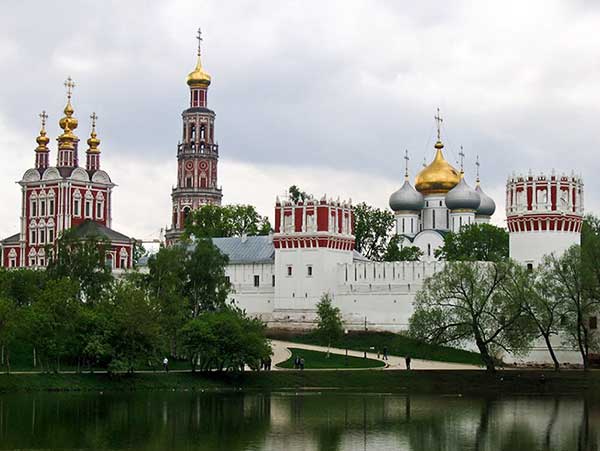
Chambers of Averky Kirilov
Stone chambers of red brick on Bersenevskaya embankment were erected for the representative of the merchant class Averky Kirillov at the beginning of the second half of the 17th century. Standing next to the ancient chambers, the amazing beauty of the Church of St. Nicholas gives the ancient ensemble a certain fabulousness.

This fabulous house on Myasnitskaya received its current appearance by 1896, when its owner, the tea merchant Perlov, intended to invite an important Chinese dignitary arriving in Moscow to conclude a lucrative contract for the supply of tea to Russia. The representative of the Celestial Empire did not get here, but Perlov did not lose out, because. many Muscovites and guests of the city were eager to see this miracle of architecture - the Tea House, which had a positive effect on sales of various colonial goods in it.
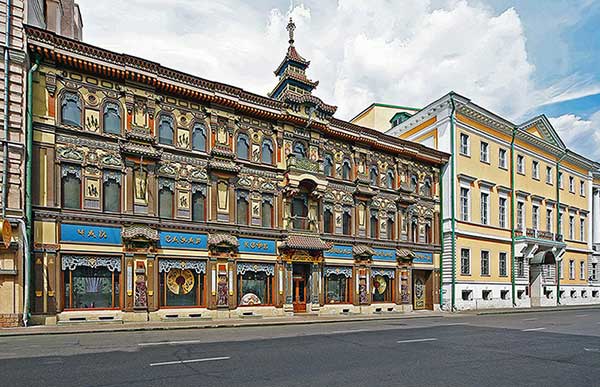
Museum-Reserve Tsaritsyno
The palace and park complex is spread over an area of about 100 hectares. All the main buildings were erected in the 18th century in the Gothic and pseudo-Gothic style. For some time, Tsaritsyno was even the royal residence. Today, exhibitions are held here, festivals are held and concerts of classical and folk music are given. Thanks to the amazing landscape and architecture, Tsaritsyno has become a favorite vacation spot.
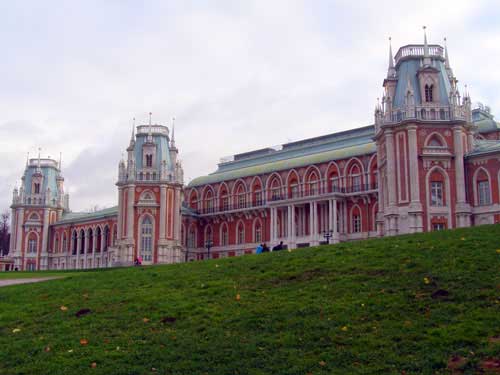
Cathedral of the Immaculate Conception of the Blessed Virgin Mary
This is the main Catholic church of the capital, built in the Neo-Gothic style. Its project was carried out by the architect Felix Bogdanovich-Dvorzhetsky. The cult building is decorated with lancet arches, figured decorative turrets stretching to the sky, multi-colored stained-glass window openings. Today, in addition to services, organ concerts are held in the cathedral.
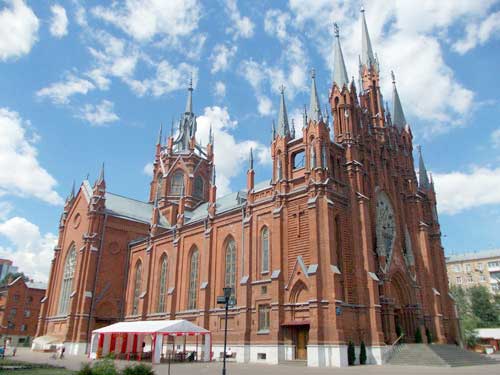
The Kremlin in Izmailovo was created as a tourist cluster and is not a historical monument. True, ancient sketches and plans of towers, churches, towers and other architectural structures of medieval Rus' were used in its construction. Today it houses museums, a wedding palace, craft workshops and much more. The complex looks like a beautiful popular print and has become one of the sights of Moscow.
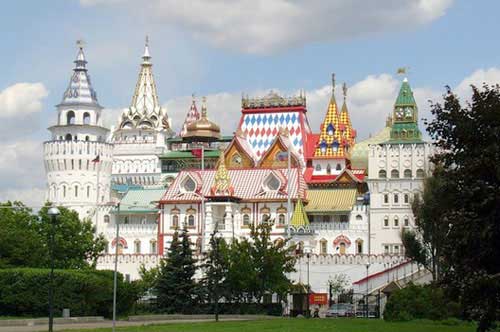
The arch to commemorate the victory in the Patriotic War of 1812 was originally installed on the current Tverskaya Zastava Square, and it was designed by the architect Beauvais. In 1936, under the Soviets, the Arc de Triomphe was dismantled and recreated only in 1968, however, in a new place - Kutuzovsky Prospekt.
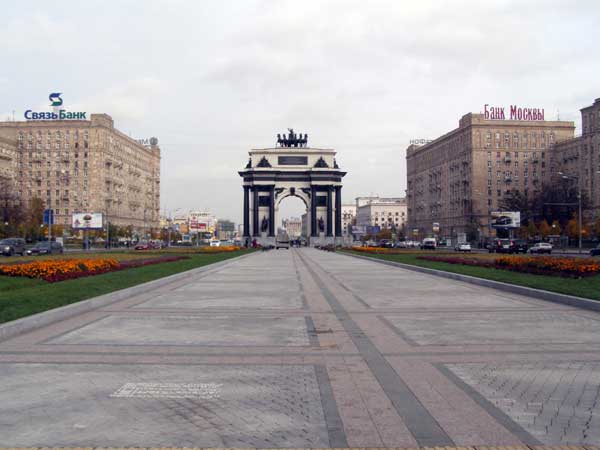
Sheremetev's estate in Kuskovo
A beautiful manor complex on the shore of a pond seems to be framing an exquisitely executed landscape park. Here the Sheremetevs held secular balls, held festivities and presented theatrical performances. Today in the Kuskovo estate, in the museum founded here, you can see one of the world's largest collections of ceramics, visit various exhibitions and musical performances.
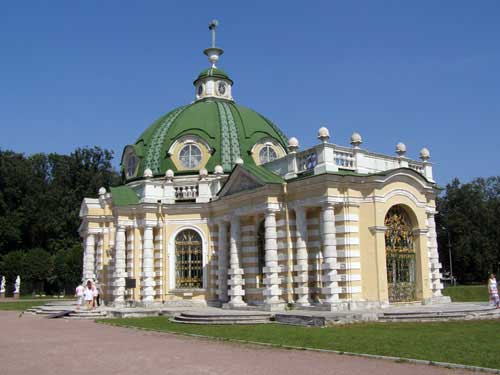
An architectural monument of the 17th century. Since the early 1990s, it has been a patriarchal residence. At first, a monastery settled here, and then the place went under the residence of the highest hierarchs of the Russian Orthodox Church. The surviving appearance of the Krutitsy Compound seems to take you back several centuries, helping to feel the greatness of ancient Rus'.
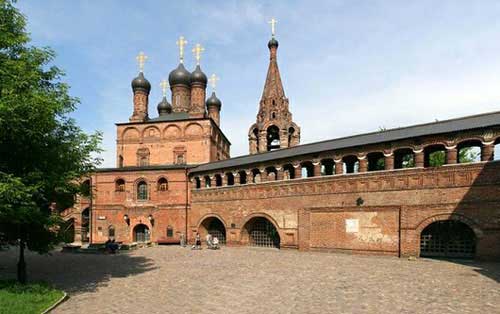
The Pushkin Museum named after A.S. Pushkin
The Museum of Fine Arts opened in 1913. The initiator of its creation was the professor of the Moscow Imperial University Ivan Vladimirovich Tsvetaev, the father of the poetess Marina Tsvetaeva. The basis of the collection is exhibits from the collection of the educational institution, as well as ancient Egyptian artifacts purchased after its opening. Today, the Pushkin State Museum of Fine Arts is the largest exhibition center in Moscow, where the most significant exhibitions are held, and a significant landmark of the city.
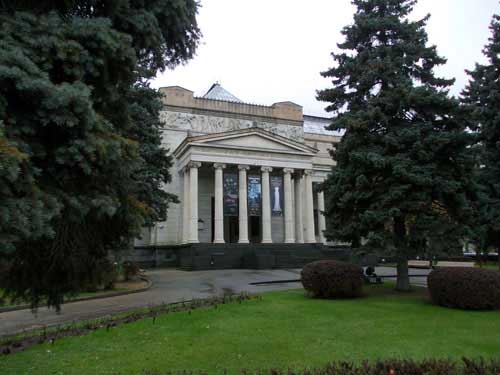
Victory Park on Poklonnaya Hill
The park and exhibition complex opened for visitors in 1995 and is dedicated to the Victory of the Soviet people in the Great Patriotic War of 1941-1945. There are several museums dedicated to this period of our history. More recently, a monument to the soldiers of World War I was opened on Poklonnaya Hill.
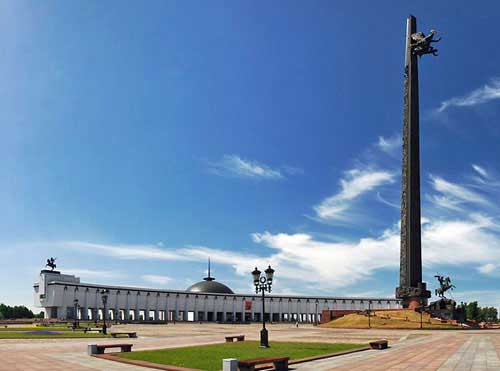
An architectural monument of the 17th century is one of the few preserved on the territory of modern Moscow. Before the revolution, the Sverchkov chambers belonged to the famous Abrikosov family, the founders of the confectionery empire.

The first building of the arena was built by 1817 according to the project of the great Beauvais. Initially, it was intended for horse riding, but for many years it has been serving as an exhibition site in the very center of Moscow, where interesting expositions are often exhibited.
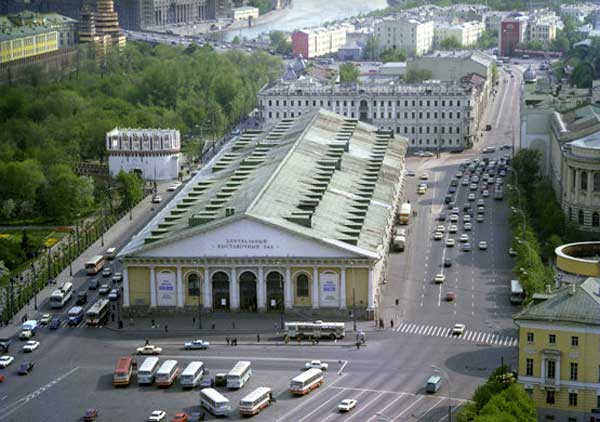
Exhibition Complex VDNH
VDNKh-VVTs after recent transformations is experiencing a boom in attendance and has become one of the main attractions of Moscow. The created comfort for visitors, the restored historical pavilions, ongoing cultural events and interesting museums make VDNKh an important place of rest for Muscovites and guests of the capital.
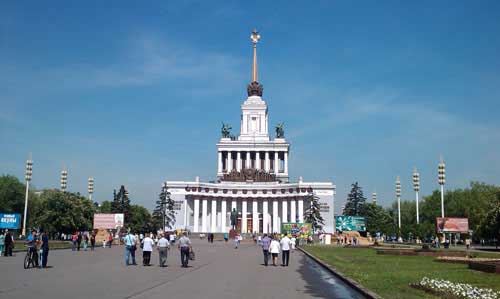
House of the "King of Porcelain" Kuznetsov
Moscow also has its own home with the Atlanteans. This incredibly beautiful building is located on Prospekt Mira and once belonged to the family of the manufacturer Kuznetsov. The interior decoration of the mansion with stucco, rich parquet and general design was also striking in its splendor.

Art Cluster "Red October"
There are various art workshops, exhibition galleries, design studios. Previously, these buildings were occupied by the Krasny Oktyabr confectionery factory. Today it is even a kind of center for Moscow bohemia, where parties are often held with the participation of well-known people. The complex of buildings itself belongs to the classic examples of industrial architecture of the first decade of the 20th century.
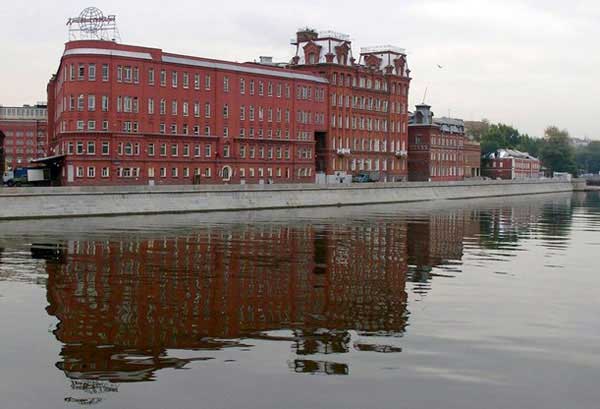
This is the first public park in Moscow, created on the personal instructions of Nicholas I and named after his beloved wife Alexandra Feodorovna - Aleksandrovsky.

Undoubtedly, the main and most recognizable sights of Moscow are located in its central historical part - on Red Square and in the ancient Kremlin, but meanwhile, we will open for you many unknown ones from this list, the history and architecture of which amazes not only guests of the capital, but also Muscovites.
We hope that the information about the Moscow sights that we presented on the page turned out to be useful for you: photo, name, description, name and addresses. Plunge into the history of the Mother See of the capital with the help of our portal, create presentations based on materials and share a description of the sights of the city of Moscow with friends.
Visit our site more often - it will be interesting!
Did you like the material? Thanks are easy! We will be very grateful if you share this article on social networks. And if you have have something to add on the topic, please write in the comments. Thank you!New articles on the site:
Interesting in the blog:
